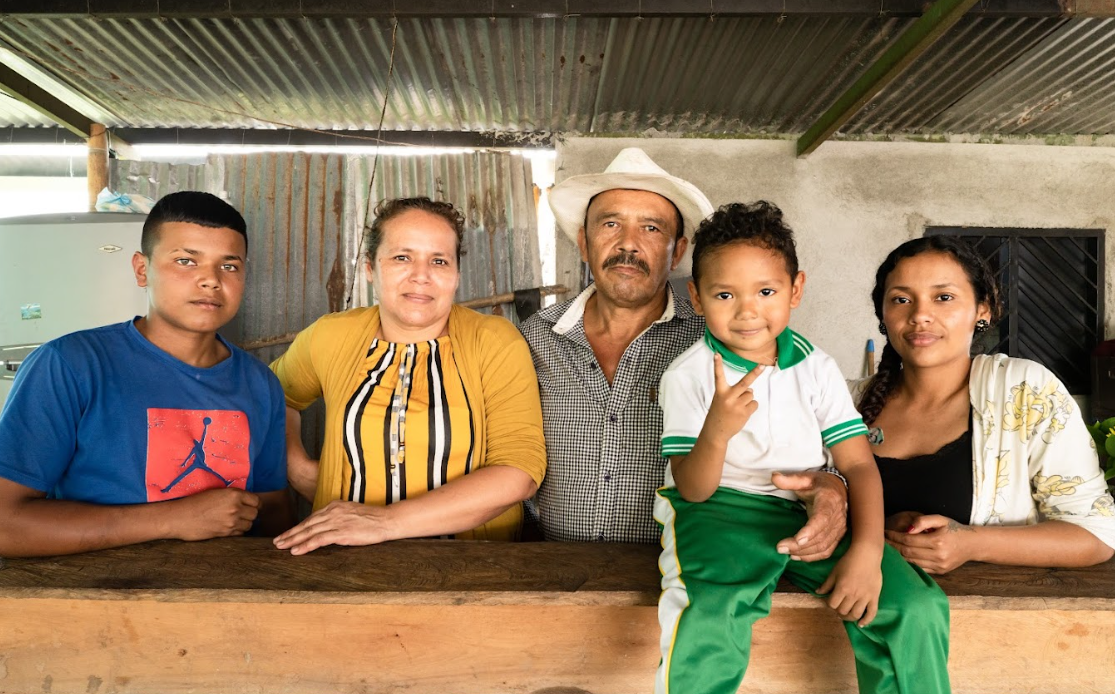Introduction
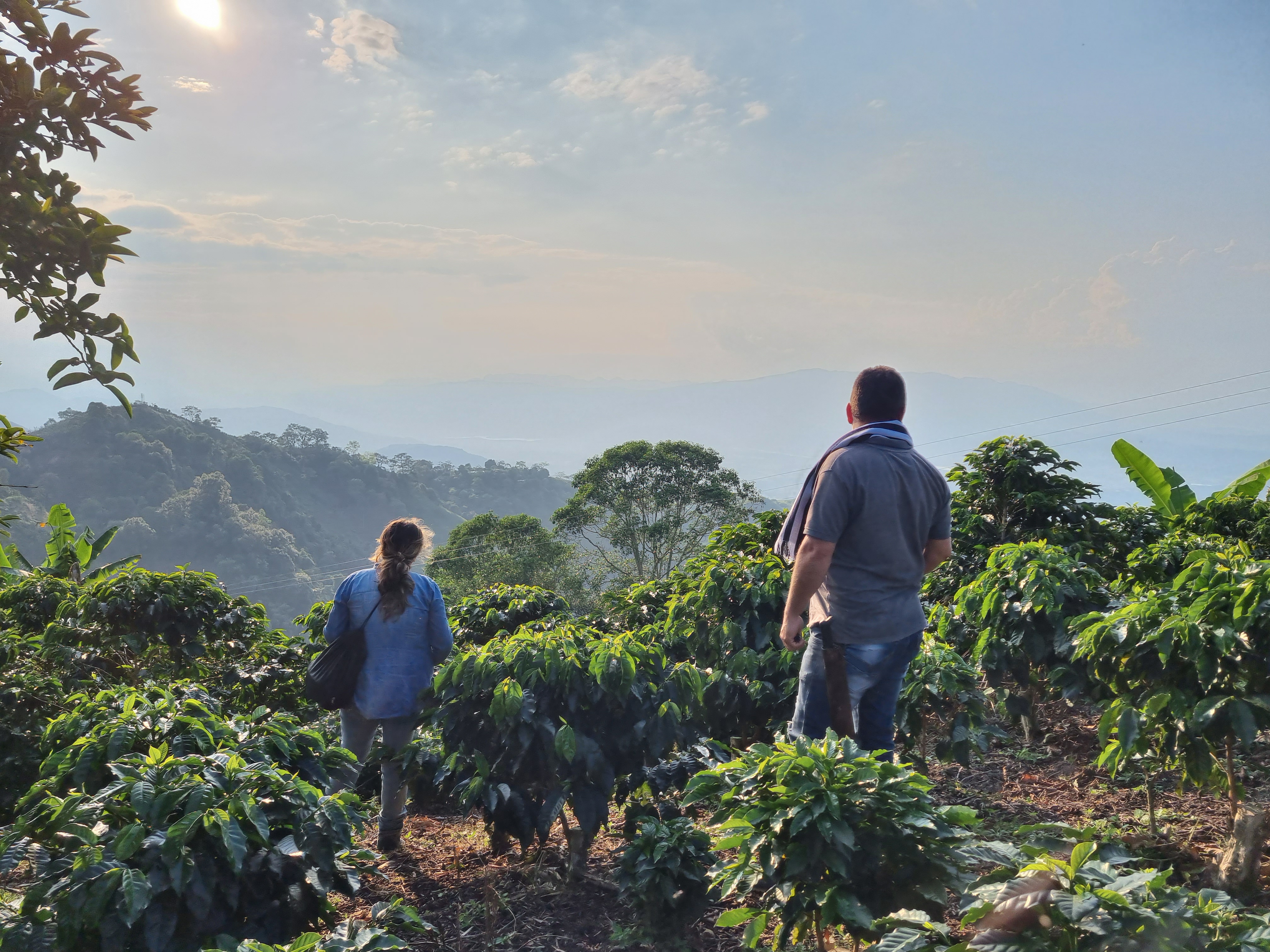
Everyone knows the need to preserve the tropical rainforest. The ongoing illegal logging of forests must really stop. That is why new EU legislation (EUDR) will be in force. No forests may be cut down for palm oil, soy, coffee, cocoa, wood, rubber and beef. The EUDR came into effect on June 29, 2023, and will be fully applicable from December 30, 2024.
Although the goal is clear, several interesting issues arise that need to be addressed. What will this regulation mean for farmers. How does one check the origin of products? Are the plots properly recorded in a (public) land register to determine ownership and deforestation? And how do you assess whether there is food fraud?
In this assignment you will find answers to these questions!
You will use basic Geo-ICT analysis techniques and discover what opportunities and challenges you will encounter.
Before you begin
Assignments
First things first
For this section you need the Colombia Atlas from EduGIS to complete the assignments. Click on this link: https://www.edugis.nl/colombia/
Here you can use the slider bar to determine the space for the atlas and the assignments yourself by sliding it to the left and right.
It is most convenient to work in pairs on two screens. One person has the EduGIS atlas in full screen and the other has the assignments. To do this, slide the vertical bar all the way to the left or right. This way you don't have to switch between atlas and assignments while you are working through the section.
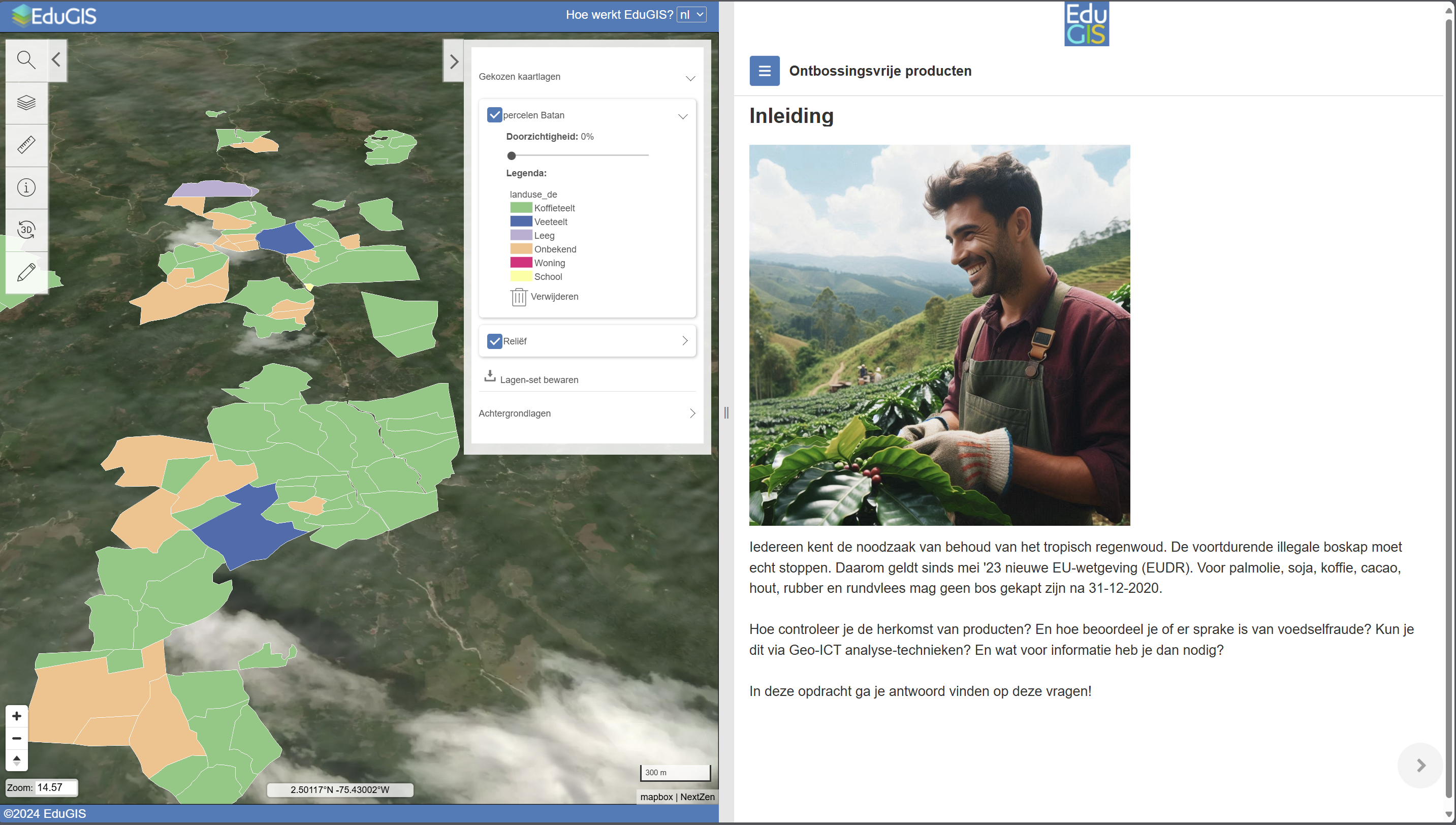
Optional: Do you want to use the atlas without the assignments? Then click on this link: https://kaart.edugis.nl/v2/#configurl=maps/colombia.json
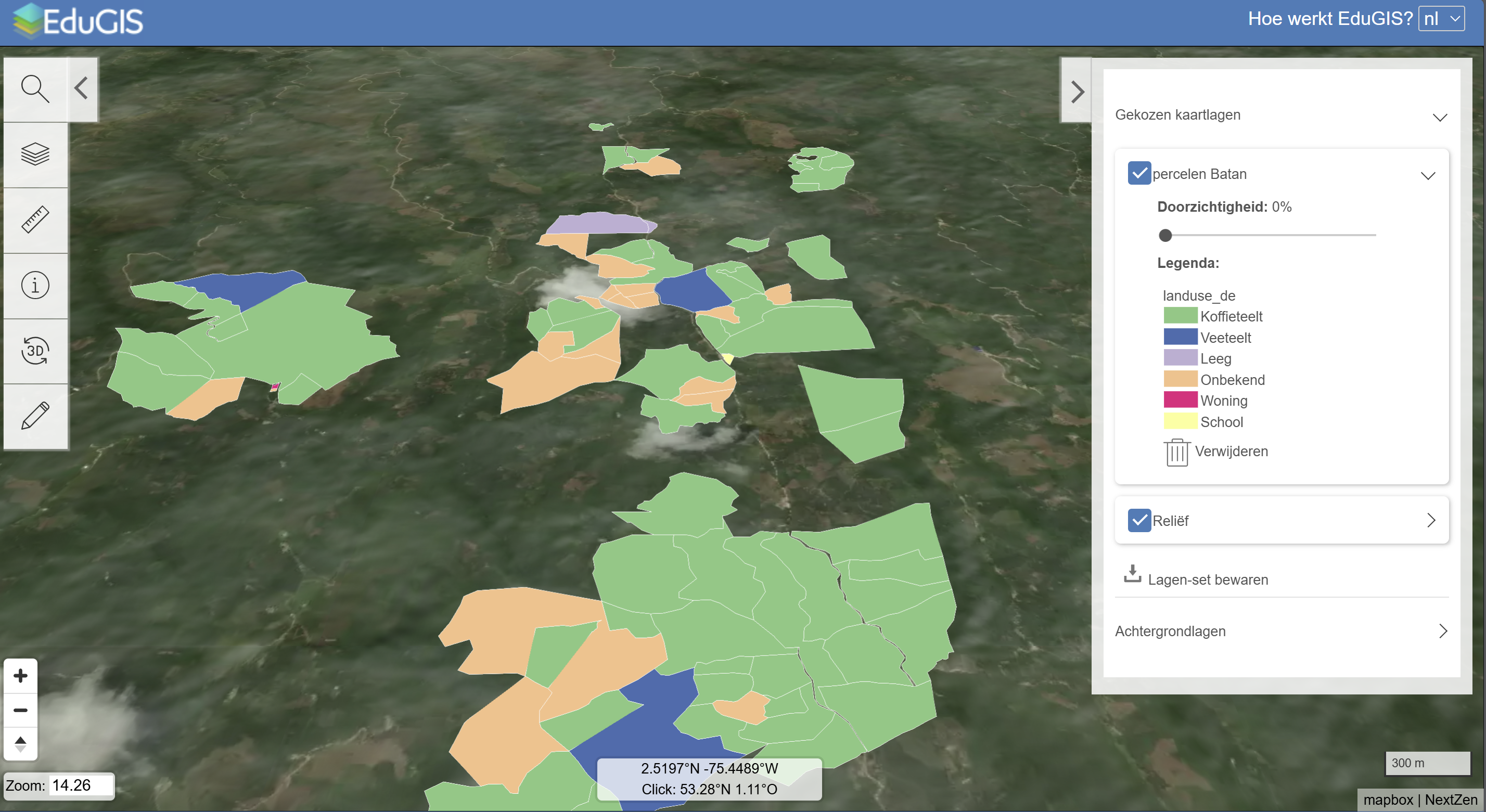
Learning goals
Goals:
- Students explore the benefits and challenges associated with the desire for deforestation-free production and its effects on local communities.
- Students discover that establishing property boundaries is an important factor for landownership and the traceability of products.
- Students examine the influence of EU legislation on small informal coffee farmers in Colombia and evaluate whether the conditions imposed actually contribute to the intended goal of deforestation-free production.

Green Deal en EU-legislation
The European Green Deal is a comprehensive plan by the European Union to tackle climate change and environmental degradation. The main goal is to make Europe the first climate-neutral continent by 2050, meaning they want to balance out the greenhouse gases they emit with those they can remove from the atmosphere.
To achieve this, they aim to significantly reduce greenhouse gas emissions by 2030, increase the use of renewable energy sources like wind and solar, and promote sustainable farming practices. They also focus on protecting natural habitats, encouraging recycling and reusing materials, and making transportation cleaner with electric vehicles and better public transport options.
In essence, the European Green Deal is about transforming Europe into a greener, more sustainable place to ensure a healthier future for everyone
Here we look into one part of the Green Deal which is about protecting natural habitats and sustainable farming practices; the EU Deforestation Free Products Regulation.
This law requires companies to prove that products such as coffee, soy, palm oil, timber, cocoa and livestock do not come from deforested areas.
The EU Deforestation Regulation (EUDR) is crucial for protecting global forests and fighting climate change. It aims to ensure that products sold in the EU are not linked to deforestation. By reducing deforestation, the EUDR helps lower greenhouse gas emissions, which are a major driver of climate change. Additionally, it promotes biodiversity by preserving natural habitats.
Below you can get a feel of the timeline involving the EUDR.
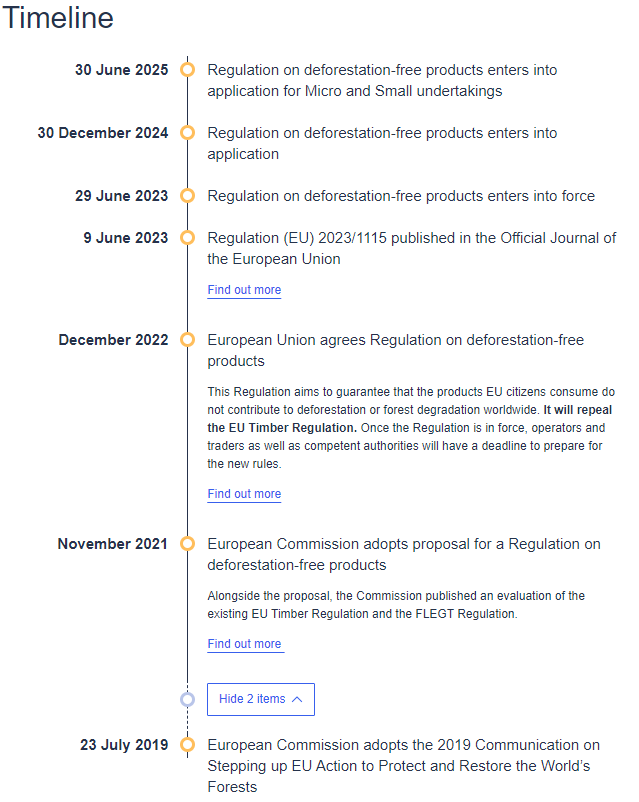
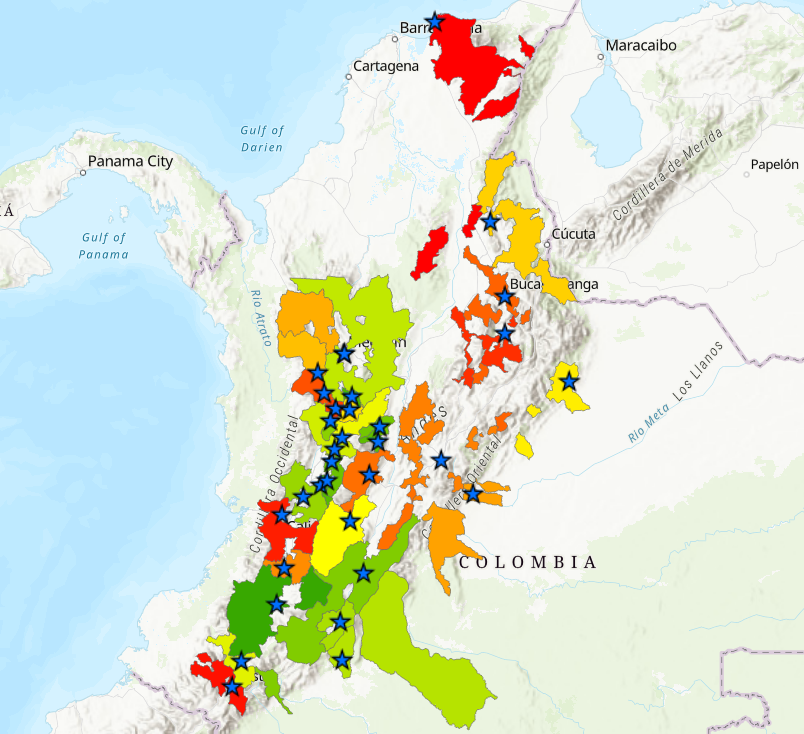
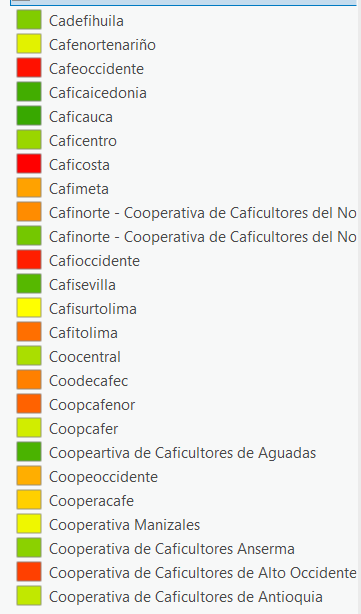
Coffee and the production chain
To understand the challenges of the EUDR you first need to know the basics of the production chain of coffee.
The journey of coffee from farm to cup involves several key steps. It starts with the farmers who grow and harvest the coffee beans. These beans are then sold to small cooperatives, which are groups of farmers working together to process and market their coffee. Next, the beans are purchased by commercial buyers, known as comercializadores, who handle the logistics of getting the coffee to larger markets. From there, the beans are sold to big importers like Starbucks, who roast and package the coffee for sale. Each step in this production chain adds value and ensures that the coffee reaches consumers in its best form.
Coffee from Colombia
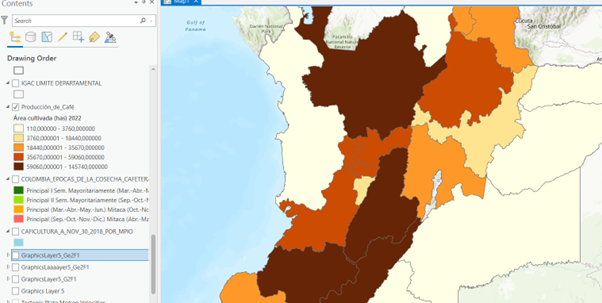
Coffee cooperations

Zooming in to Huila
Forest, agricultural landuse and land governance
- Students explore the digital maps of forest cover and forest cover change.
- Introducing coffee growing plots in Colombia. Divide the plots among the students or groups of students.
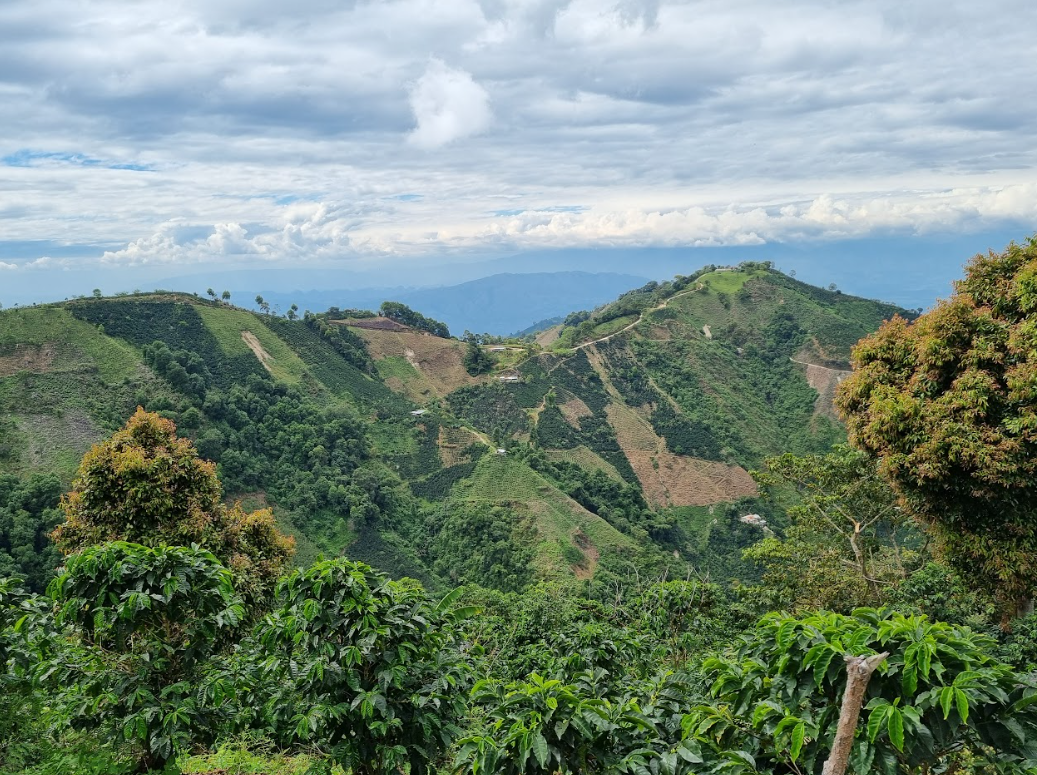
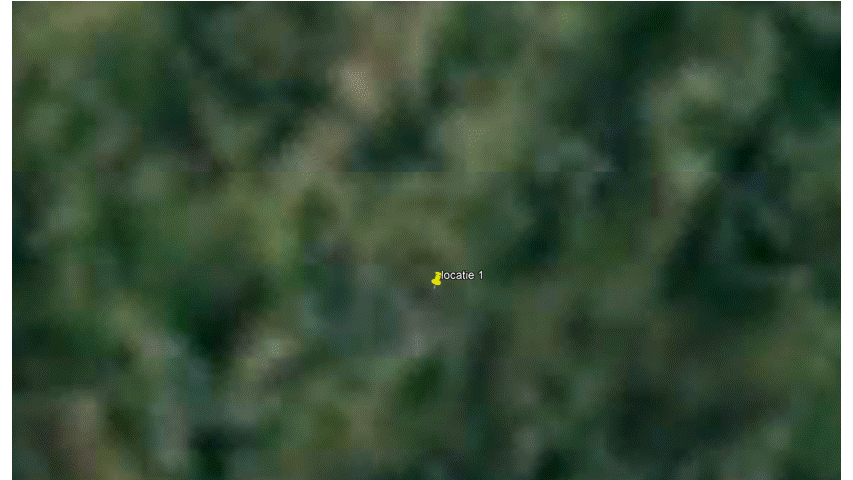
Plot analyses
- Instruct students to analyze the forest cover around assigned coffee plots.
- Use EduGIS to visualize the change/current status of the forest cover and compare it with the maps.
- Have the students investigate whether deforestation has occurred on or around the coffee plots.
Deforestation-free products; how can one achieve that?
Jose is a coffee farmer, can you help him apply for a cooperation membership?
Students create a report in which they present their findings.
The report must contain:
- A description of the assigned plot.
- Analysis of forest cover (change).
- Assessment of whether the coffee plots meet the criteria for the cooperation (including deforestation-free production).
- An evaluation of the practical feasibility for farmers to meet these criteria.
- Discussion on the effectiveness of the conditions set in achieving the intended goal of deforestation-free production.
- Recommendations for coffee farmers and policy makers.
